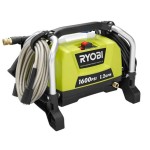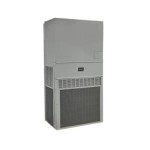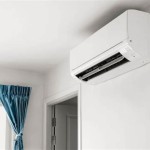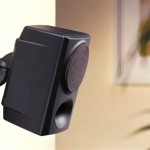Wall Mounted Air Conditioner Leaking Water: Causes and Solutions
Wall mounted air conditioners, also known as mini-split systems, offer a convenient and efficient cooling solution for residential and commercial spaces. However, one common issue that can arise is water leakage. This can manifest as dripping from the unit itself, water accumulating around the base, or even damage to surrounding walls and flooring. Understanding the causes of this problem and knowing how to address them is crucial for maintaining the air conditioner's performance and preventing further complications.
Water leakage from a wall mounted air conditioner is not only inconvenient but can also indicate underlying problems that, if left unaddressed, can lead to more significant and costly repairs. Identifying the source of the leak is the first step in resolving the issue. Several factors can contribute to this problem, ranging from simple clogs to more complex mechanical failures.
Clogged Drain Line
The most frequent cause of water leakage in wall mounted air conditioners is a clogged drain line. These systems function by removing moisture from the air. This moisture condenses on the cooling coils and is collected in a drain pan. The water then flows through a drain line to the outside or to a designated drain point. Over time, dust, dirt, algae, and other debris can accumulate inside the drain line, creating a blockage that prevents the water from draining properly. When the water cannot escape through the drain line, it overflows the drain pan and eventually leaks out of the unit.
Diagnosing a clogged drain line is relatively straightforward. If water is observed dripping from the indoor unit, especially when the air conditioner is actively cooling, a clogged drain line is a prime suspect. Another indicator is the presence of moldy or musty odors emanating from the unit, as stagnant water in the drain pan provides a breeding ground for mold and bacteria.
Addressing a clogged drain line often involves a few simple steps. First, the air conditioner should be turned off to prevent further water accumulation. Locate the drain line exit point, usually found outside the building or connected to a plumbing drain. Using a wet/dry vacuum, attempt to suction out any blockage from the drain line. Position the vacuum hose firmly over the drain opening and run it for several minutes. This method often dislodges the clog and allows the water to flow freely. Alternatively, a stiff wire or pipe cleaner can be carefully inserted into the drain line to break up the blockage. Exercise caution when using these tools to avoid damaging the drain line itself.
Another common method involves using a mixture of warm water and vinegar (equal parts) or a specialized drain cleaner designed for air conditioning systems. Pour the solution slowly into the drain pan or drain line opening, allowing it to sit for about 30 minutes to an hour. This helps to dissolve any remaining debris. Afterward, flush the drain line with water to ensure that the blockage is completely removed. Regular maintenance, such as flushing the drain line with vinegar solution every few months, can help prevent future clogs and maintain optimal drainage.
Frozen Evaporator Coils
Another potential cause of water leakage is frozen evaporator coils. The evaporator coils are responsible for cooling the air that passes through the unit. When the coils freeze over, the ice eventually melts when the unit is turned off or the temperature rises. This melting ice produces a significant amount of water, which can overwhelm the drain pan and cause leakage.
Several factors can contribute to frozen evaporator coils. One common cause is restricted airflow. Dirty air filters, blocked vents, or obstructions around the indoor unit can impede the flow of air across the coils, causing them to become excessively cold and freeze. A malfunctioning fan motor, which reduces the amount of air circulating over the coils, can also lead to freezing. Additionally, low refrigerant levels can also cause the evaporator coils to become too cold and freeze. Refrigerant is essential for the proper cooling cycle, and a leak in the refrigerant line or a general lack of refrigerant can disrupt this process and lead to freezing.
Diagnosing frozen evaporator coils typically involves visually inspecting the coils. If the unit is accessible, remove the front panel and examine the coils. If they are covered in ice or frost, this confirms the problem. Turn off the air conditioner immediately to allow the ice to thaw. This may take several hours, depending on the severity of the freezing.
Once the ice has melted, address the underlying cause of the freezing. Start by replacing the air filter with a clean one. Dirty air filters significantly restrict airflow and are a common culprit. Ensure that all vents are open and that there are no obstructions around the indoor unit that could be blocking airflow. If the fan is not working properly, it may need to be repaired or replaced by a qualified technician. If low refrigerant is suspected, contact a licensed HVAC professional to inspect the system for leaks and recharge the refrigerant to the appropriate level. Attempting to handle refrigerant without proper training and equipment can be dangerous and is best left to professionals.
Preventing frozen evaporator coils involves regular maintenance of the air conditioner. Change the air filter regularly, typically every one to three months, depending on usage and air quality. Ensure that the vents are not blocked and that the unit has adequate airflow. Schedule routine maintenance with a qualified HVAC technician to inspect the system for leaks, check refrigerant levels, and ensure that all components are functioning properly.
Damaged or Cracked Drain Pan
The drain pan, located beneath the evaporator coils, collects the condensation that forms during the cooling process. If the drain pan is cracked, damaged, or corroded, it will not be able to hold the water properly, leading to leakage. Over time, the plastic or metal drain pan can become brittle and susceptible to damage, especially in environments with high humidity or temperature fluctuations.
Identifying a damaged drain pan involves a visual inspection. Look for cracks, holes, or signs of corrosion on the pan. If the pan is visibly damaged, it will need to be repaired or replaced. Depending on the severity of the damage, a temporary patch may be possible, but a permanent solution usually involves replacing the entire drain pan.
Replacing a drain pan can be a more complex task and may require the assistance of a qualified HVAC technician. The process typically involves removing the air conditioner's housing, disconnecting any components that are attached to the drain pan, and carefully removing the old pan. The new drain pan is then installed in its place, and all connections are re-established. It is crucial to ensure that the new drain pan is properly sealed to prevent future leaks.
To prevent drain pan damage, avoid placing heavy objects on or around the indoor unit that could potentially damage the pan. Regularly inspect the pan for signs of cracks or corrosion and address any issues promptly. Consider using a dehumidifier in the room to reduce the overall humidity and prevent excessive condensation, which can contribute to pan corrosion. In some cases, applying a protective coating to the drain pan can help prolong its lifespan and prevent damage.
Beyond these primary causes, other factors can also contribute to water leakage from a wall mounted air conditioner. Improper installation, such as an incorrect slope of the drain line, can prevent water from draining properly. A kinked or obstructed drain line can also impede water flow. Additionally, extreme weather conditions, such as high humidity or heavy rainfall, can exacerbate drainage issues.
When addressing water leakage from a wall mounted air conditioner, it is essential to prioritize safety. Always turn off the unit before performing any maintenance or repairs to avoid electrical shock. If you are not comfortable working with electrical components or HVAC systems, it is best to consult a qualified technician. Attempting to repair the unit without proper knowledge and experience can lead to further damage and potential injury.
Preventive maintenance is the key to preventing water leakage and other common problems with wall mounted air conditioners. Regular cleaning of the air filter, flushing the drain line, and periodic inspections by a qualified technician can help identify and address potential issues before they escalate into major problems. By taking these proactive steps, you can ensure that your wall mounted air conditioner operates efficiently and reliably for years to come.
Proper installation is also vital. Ensuring the unit is level and that the drain line has the correct slope will prevent future leaking problems. A professional installation will account for these factors, reducing the chance of issues arising soon after installation.
In summary, water leakage from a wall mounted air conditioner can stem from various causes. Identifying the root cause is crucial for effective resolution. While some issues, such as clogged drain lines, can be addressed with simple DIY methods, others, such as frozen evaporator coils or damaged drain pans, may require the expertise of a qualified HVAC technician. Consistent maintenance and prompt attention to potential problems are essential for preventing water leakage and maintaining the optimal performance of the air conditioning system.

Why Is My Wall Mounted Air Conditioner Leaking Water

How To Fix Wall Air Conditioner Ac Water Leak

4 Reasons Why Your Ductless Mini Split Ac Is Leaking Water Napoleon

My Air Conditioner Is Leaking Water Why It S And What To Do Service Champions Norcal

Hvac Service Call Ductless Mini Split Wall Mounted Air Conditioner Leaking Water Ac

How To Fix An Air Conditioner Leaking Water Inside 8 Tips

Reasons Why Your Aircon Keep Leaking Water Singapore Service

Why Is My Split System Leaking Water 5 Common Reasons

Why Is My Air Conditioner Leaking Water What Should I Do

Why Is My Air Conditioner Leaking Water With Pictures








